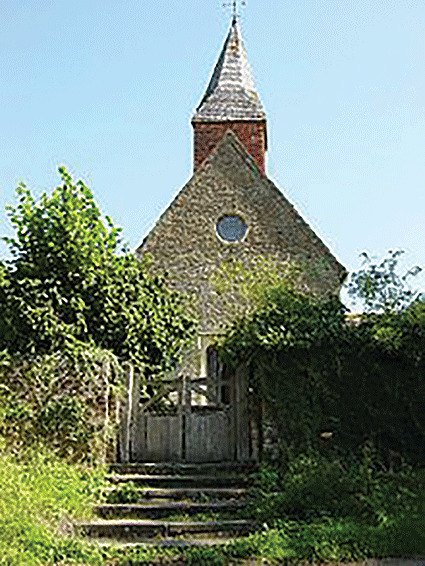
Museum archives: William Prikkeloue and the missing archives.
Despite the rich archive of documents which help to tell the story of Steyning there are plenty of gaps in the record.Some of the gaps are not at all surprising. The centuries before the Norman Conquest, for instance, are only sparsely documented and those which do mention Steyning are in almost every instance linked to royalty. The burial of King Aethelwulf in Steyning in 858 is recorded and points to the high status of its minster church at that time and, a few decades later, King Alfred’s will bequeathed the manor to his nephew Aethelwold.
We then wait a hundred years before the name ‘Stenig’ reappears, this time on the coins of King Cnut. Later in the eleventh century the grant of the manor of Steyning to the Abbey of Fecamp by King Edward the Confessor, and its subsequent misappropriation by Earl Godwin and his son Harold, played its part in providing justification for William the Conqueror’s invasion of England.
But some of the gaps are surprising. What we would expect to find in the centuries following the Conquest is a growing archive of local documents relating to either the output of the manor or the deliberations of the manorial courts at Steyning. But, except for one year – 1337-38 – in which the manor was taken into the hands of the crown (Edward III declared war on France in that year) and its detailed and extensive accounts lodged with the royal archive, there is little sign of any other specifically local record until the 15th century.
The reason why some of these local documents disappeared may lie at the door of ‘an evilly disposed person’ called William Prikkeloue. In the January of 1399 Prikkeloue broke into the manor house in Warminghurst and burnt a number of the documents which were preserved there.
The relevance of Warminghurst (6 miles away to the northwest) to Steyning’s story is that, in the 14th century it was still owned by the Abbey of Fecamp, along with Steyning, and that both the church and the manor had close links with Steyning. Whether William had a grudge against the then steward of both manors, Hugh Veretot, or whether he hoped to eliminate evidence pertaining to land he was illegally occupying cannot be guessed at.
What we do know is that in 1402 King Henry IV 'granted a pardon to William Prikkeloue for having on Tuesday after the Epiphany in the first year of Henry IV [1399] at Wormynghurst within the manor which is parcel of the possessions of the Abbey of Fecamp, in the King’s hands on account of the war, broken and entered divers chambers and burned divers charters, court rolls and account rolls of the Manors of Wormynghurst, Ecclesdon [near Angmering], Steynyng and other Manors and possessions of the Abbey; and for all trespasses and misprisons committed by him except murder, rape and common larceny; and pardon to him the execution of the judgement of the above causes and his fine and ransom'. Nothing is said about the reasons for his receiving a pardon.
The Prykkeloue family continued to live locally and, from what we can see, seemed to have had something of the same rebellious spirit as their forebear. Towards the end of the 15th century Richard (by then) Prykloue was a butcher who combined being a juror at the View of Frankpledge, a court dealing with breaches of the peace and violations of the assize of bread and of ale and of market regulations, with a propensity to play fast and loose with those same regulations. And a century after that John Pricklow was reported to the Bishop by the churchwardens 'that he and seven others have not receaved the holie comunun this yeare'.
What we will never know is to what extent the 'divers charters, court rolls and account rolls' burnt by William Prykkeloue would have filled in those gaps in the archive of Steyning’s past.
Image: The former 13th century church of Warminghurst

